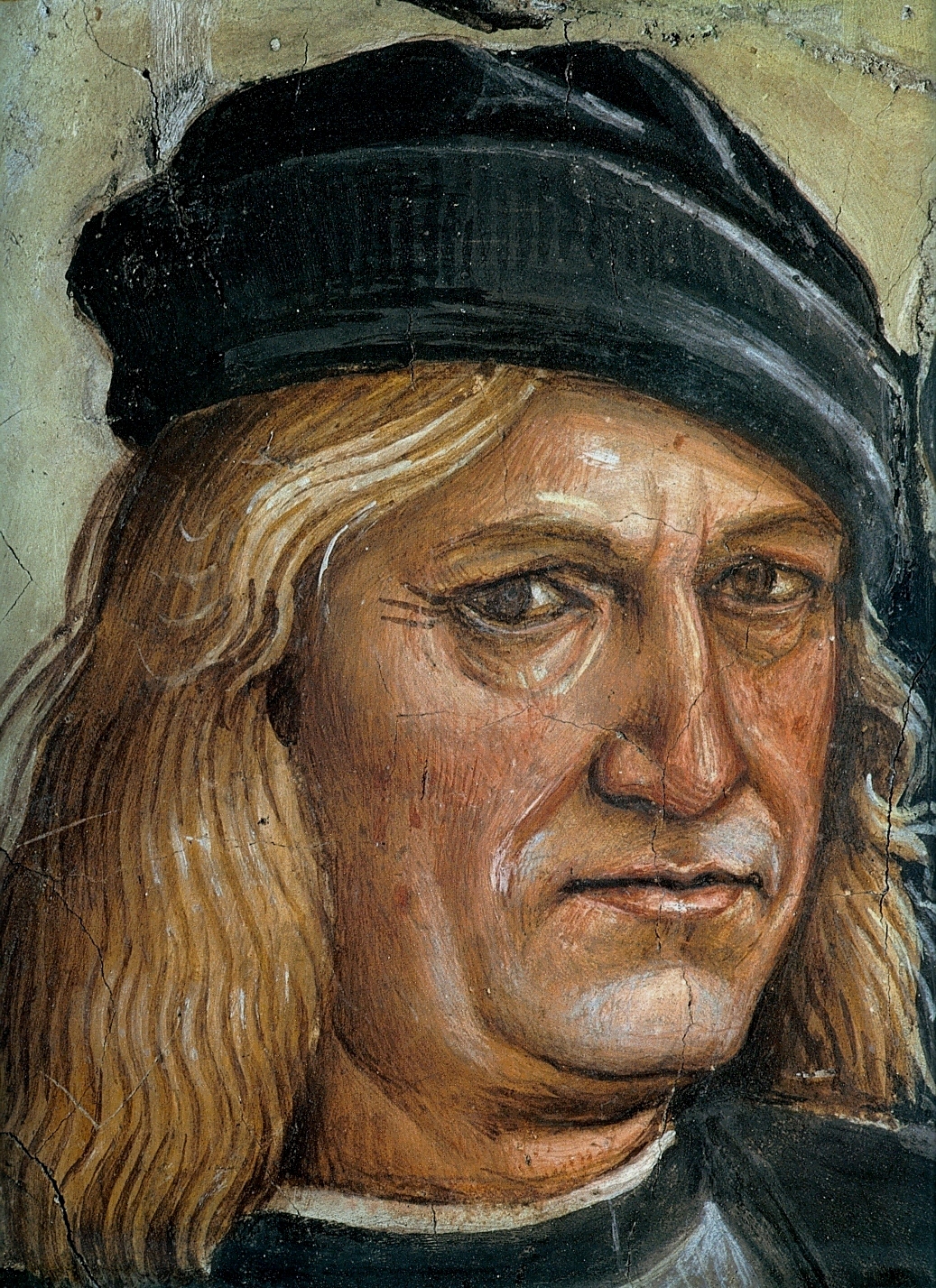|
Pala Di Sant'Onofrio
The ''Sant'Onofrio Altarpiece'' is a painting by the Italian Renaissance painter Luca Signorelli, housed in the Museo dell'Opera del Duomo in the Cathedral of Perugia, Italy. It was painted for the church in 1484, commissioned by bishop Jacopo Vagnucci, a native of Cortona, Signorelli's birthplace. Description The scene portrayed is a Holy Conversation, with a high throne where the Virgin and Child sit, placed over a Classical-style pedestal and crowned by a small engraved arch featuring a festoon with vegetables. Mary is reading a Bible, while Jesus holds a white lily, symbolizing her virginity and purity. Over a gilded step are St. John the Baptist and St. Lawrence, surmounted by two flying angels. On the marble step below, Signorelli portrayed a sitting angel playing a lute, perhaps a homage to elements typical of the contemporary Venetian school (such as the San Cassiano Altarpiece by Antonello da Messina). The angel resembles one painted by Signorelli in the Basili ... [...More Info...] [...Related Items...] OR: [Wikipedia] [Google] [Baidu] |
Luca Signorelli
Luca Signorelli ( – 16 October 1523) was an Italian Renaissance painter from Cortona in Tuscany, who was noted in particular for his ability as a draftsman and his use of foreshortening. His massive frescos of the ''Last Judgment'' (1499–1503) in Orvieto Cathedral are considered his masterpiece. In his early 40s he returned to live in Cortona, after working in Florence, Siena and Rome (1478–84, painting a now lost section of the Sistine Chapel). With an established reputation, he remained based in Cortona for the rest of his life, but often travelled to the cities of the region to fulfill commissions. He was probably trained by Piero della Francesca in Florence, as his cousin Giorgio Vasari wrote, and his Quattrocento style became rather out of date in the new century. Cortona will host a major exhibition in 2023 to celebrate the 500th anniversary of his death. Biography He was born Luca d'Egidio di Ventura in Cortona, Tuscany (some sources call him Luca da Corto ... [...More Info...] [...Related Items...] OR: [Wikipedia] [Google] [Baidu] |
Herculanus Of Perugia
Herculanus of Perugia ( it, Ercolano; died 549 AD) was a bishop of Perugia. He was canonized as a saint by the Catholic Church and is recognised as patron saint of Perugia. His main feast day is November 7; his second feast is celebrated on March 1. According to Pope Gregory the Great in his ''Dialogues'', Herculanus suffered martyrdom when Totila, king of the Ostrogoths, captured Perugia in 549. Before the city was captured, Herculanus is said to have tried to save the city by feeding the last sack of grain to the last lamb. This was meant to give the Ostrogoth forces the impression that the Perugians had food to spare, and were able to feed a weak lamb with their precious grain. With food to spare, they were thus able to withstand the siege. However, Totila was not fooled by this trick and captured the city just the same. Totila is said to have given orders for Herculanus to be completely flayed. However, the Ostrogoth soldier who had to perform this task took pity on the ... [...More Info...] [...Related Items...] OR: [Wikipedia] [Google] [Baidu] |
Altarpieces
An altarpiece is an artwork such as a painting, sculpture or relief representing a religious subject made for placing at the back of or behind the altar of a church (building), Christian church. Though most commonly used for a single work of art such as a painting or sculpture, or a set of them, the word can also be used of the whole ensemble behind an altar, otherwise known as a reredos, including what is often an elaborate frame for the central Religious image, image or images. Altarpieces were one of the most important products of Christian art especially from the late Middle Ages to the era of the Counter-Reformation. Many altarpieces have been removed from their church settings, and often from their elaborate sculpted frameworks, and are displayed as more simply framed paintings in museums and elsewhere. History Origins and early development Altarpieces seem to have begun to be used during the 11th century, with the possible exception of a few earlier examples. The reasons an ... [...More Info...] [...Related Items...] OR: [Wikipedia] [Google] [Baidu] |
Paintings In Perugia
Painting is the practice of applying paint, pigment, color or other medium to a solid surface (called the "matrix" or "support"). The medium is commonly applied to the base with a brush, but other implements, such as knives, sponges, and airbrushes, can be used. In art, the term ''painting ''describes both the act and the result of the action (the final work is called "a painting"). The support for paintings includes such surfaces as walls, paper, canvas, wood, glass, lacquer, pottery, leaf, copper and concrete, and the painting may incorporate multiple other materials, including sand, clay, paper, plaster, gold leaf, and even whole objects. Painting is an important form in the visual arts, bringing in elements such as drawing, composition, gesture (as in gestural painting), narration (as in narrative art), and abstraction (as in abstract art). Paintings can be naturalistic and representational (as in still life and landscape painting), photographic, abstract ... [...More Info...] [...Related Items...] OR: [Wikipedia] [Google] [Baidu] |



